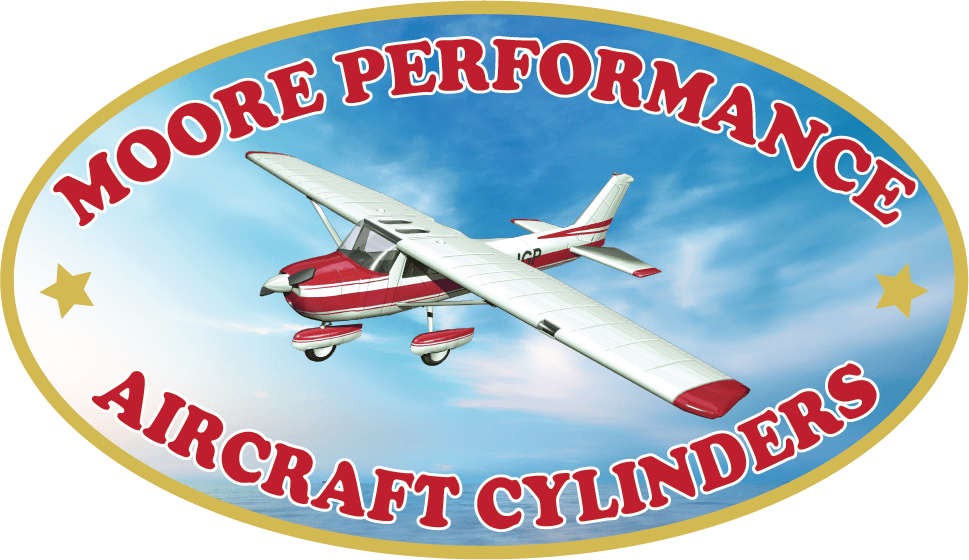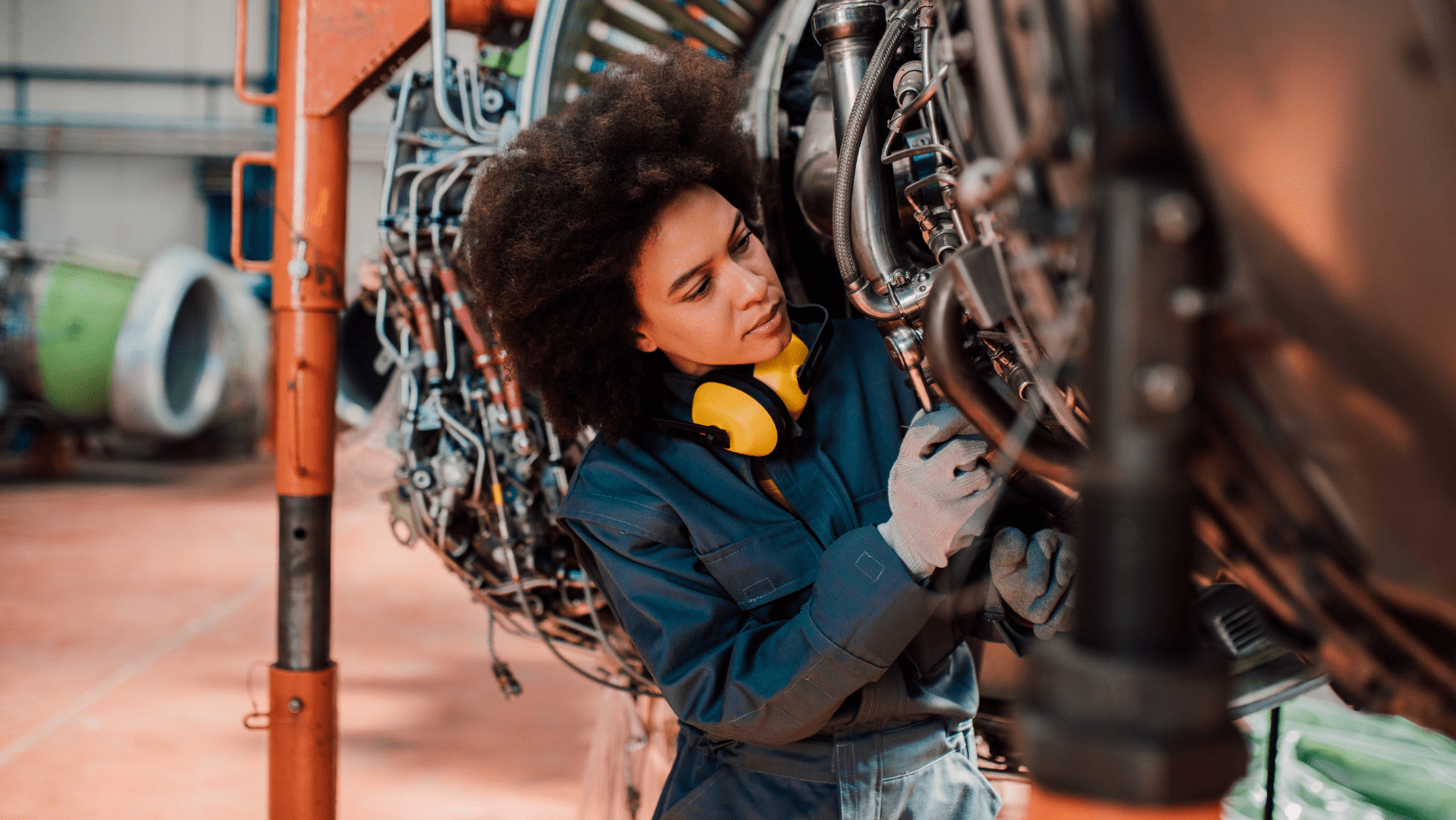Proper aircraft maintenance is the cornerstone of flight safety. Everything from simple tasks such as regular lubrication and tire changes, to more elaborate repairs like replacing worn parts and overhauls play a crucial role in keeping your aircraft airworthy and serviceable.
Many of us easily recognize when our tires need changing and can keep on top of manufacturer recommended repair timing, but how do you know when it is time for aircraft cylinder maintenance? Here are some of the most common indicators that signal the need for immediate cylinder inspection or repair:
Symptoms of an Aircraft Cylinder in Need of Repair
One of the most obvious indicators of aircraft cylinder trouble is oil seeping from the head-to-barrel joint. This could mean that there is a crack in a cylinder – a situation that definitely indicates that your aircraft cylinder requires immediate attention.
Use Your Senses of Hearing and Feeling
When on the hunt for things which may have gone awry within your aircraft, it is more helpful than you might think to rely on your senses for clues. You can sometimes hear or feel your way toward diagnosing compression problems. For instance, if your aircraft cylinder is failing to maintain pressure, you may be able to determine where the air is escaping simply by listening or feeling for that unwelcome air flow. Your compression is definitely something that you or a trusted mechanic should also stay on top of. Cracks, broken valves and faulty seals can lead to serious compression problems or even complete engine failure.
Use Your Eyes
Also note that the amount of compression your aircraft cylinder is able to maintain can wane over time. It is an excellent practice to keep a very good eye on your compression situation so that if your compression situation is deteriorating, you know exactly how much and how fast.
How far can you let compression issues go before overhauling your aircraft cylinders? It all depends on the type of aircraft engine you have. When it comes to compression, adhering to manufacturer specifications is imperative. While 65 over 80 psi may be an acceptable compression limit on one engine, it may not be an acceptable compression limit for another aircraft engine.
Keep a good eye on those seals too! Poor seals can be problematic as well. When the aircraft engine is not running, a poor seal between the rings and cylinder may allow oil to seep into the spark plugs, filling them with oil and leading to fouled plugs.
Use Your Sense of Smell
The nose definitely knows. You may be able to discover a blow-by problem by simply smelling the difference in your oil.
Put the Experience of a Qualified Aircraft Mechanic to Good Use as Well
Less noticeable signs that your aircraft cylinder is in need of an overhaul may be acquired through testing by an experienced aircraft overhaul mechanic. For instance, if your aircraft oil, which can be an exceptional indicator of engine issues, darkens soon after an oil change, this could indicate piston problems. More specifically, it could mean that you have worn or broken piston rings and blow-through which may result in fouled plugs and excessive crankcase pressure.
An in-depth oil analysis conducted by a trained mechanic can determine the actual extent of a blow-by issue by providing a breakdown of the quantity of each material present within an oil sample. That way, you will be able to uncover any abnormalities and pinpoint exactly where they are occurring.
How Long Do Aircraft Cylinders Last?
The longevity of an aircraft cylinder will depend upon the type of cylinder, its use and whether or not sufficient and proper attention and maintenance took place throughout the lifespan of that aircraft cylinder. The typical time between aircraft cylinder overhaul periods recommended can also vary from manufacturer to manufacturer. An aircraft owner/operator should refer to manufacturer specifications and, quite possibly, a top overhaul – where all of your aircraft cylinders need to be replaced at once – should take place when your aircraft cylinders no longer meet the manufacturer recommended criteria.
Conversely, since aircraft cylinders operate independently of one another and can experience different airflow, temperatures, cooling rates and more; you may also run into a situation in which you may want to address the repair of each aircraft cylinder separately. A reliable mechanic who specializes in aircraft cylinder overhaul will be able to properly advise you as to when a particular aircraft cylinder requires repair.
Your best defense against aircraft engine failure is a good defense when it comes to maintenance. A respectable aircraft maintenance program will include vigilant monitoring of your aircraft cylinders – one which includes you and a highly trained aircraft cylinder technician keeping a watchful eye on compression trends and the appearance of your oil, as well as inspecting your oil burn rate. When it comes to your aircraft cylinders, this persistent attentiveness will help ensure that you are taking the best care and most economic course of action toward maintaining optimal aircraft engine health and safety.
Where to Turn for Your Aircraft Cylinder Maintenance
Put your aircraft in the capable hands of an aircraft cylinder overhaul and repair service center you can trust – Moore Performance Products. Providing a variety of overhaul services nationwide and overseas for both the aircraft and aerospace industries, Moore Performance Products has been endorsed by the Federal Aviation Administration (FAA) as a certified repair and welding station. Moore Performance Products, family owned and operated since 1995, specializes in aircraft cylinders and repairs – facilitating them with the experience, knowledge and skill to keep your aircraft cylinders running at peak performance.
Moore Performance Products is located at 132 W. Park Avenue, Building 1, in Edgewater Florida. Please feel free to call our knowledgeable customer service team at 386-409-7501 or 888-409-7555 any time between 9 a.m. and 5 p.m., Monday through Friday.


